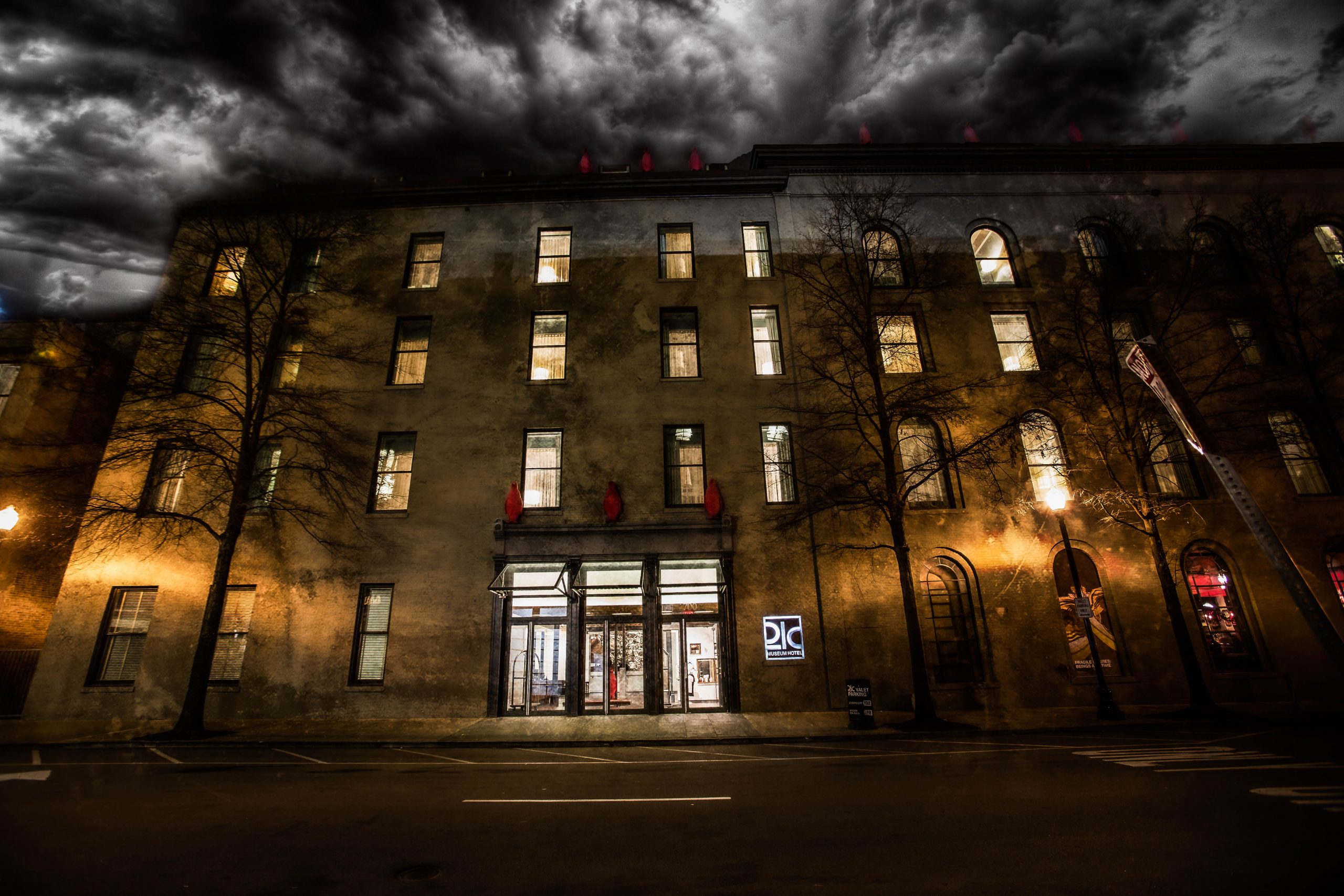
Downtown Louisville has been the epicenter of unspeakable atrocities such as war, slavery, death, and other such horrors since the city’s founding in 1778. Today, in the heart of West Main remains a particularly chilling remnant of Louisville’s tormented past in the form of the 21c Museum Hotel, a contemporary art museum and hotel that attracts hundreds of tourists each year.
And while the building has a fascinating history with ties to the city’s legacy as a center for bourbon and tobacco production, some lingering souls from its past have tarnished this stylish vacation spot by continuing to overstay their welcome…from beyond the grave. Join Derby City Ghosts to unveil the strange truths behind the 21c Museum Hotel, and learn more about the dark side of Louisville’s centuries-old bourbon and tobacco trade.
QUICK FACTS:
Louisville is known for its world-class museums, significant Civil War history, and the place where the Kentucky Derby takes place every May on the racetrack at Churchill Downs. But perhaps most important to this southern town’s economy and lasting culture is Kentucky Bourbon, which has gone on to cement Louisville as the world’s Bourbon capital.
The bourbon business was vital to stimulating the economy of Louisville and employed thousands of workers across town. Thanks to Kentucky’s fertile soil, settler farmers back in the 17th century thrived when it came to growing corn.
And whiskey distilling quickly swept the area by using the knowledge they learned from their hometowns back in Germany, Northern Ireland, and Scotland. Distillers who migrated from the east coast changed their recipe to use corn in place of rye, which was commonly used in different parts of the country. Soon, these distillers landed on a distinctive style of corn-based whiskey known today.
Like much of the nation, tobacco was also vital to the prosperity of Louisville, as it was the most lucrative cash crop a farmer could grow. Several tobacco companies began popping up around Kentucky, and between 1865 to 1929, the state led the nation in tobacco production. It’s important to note that the slave trade was crucial to the tobacco industry’s success, and thousands of enslaved Africans were taken to Louisville and Lexington to work on plantations—a grim reminder of Kentucky’s troubled history.
As previously mentioned, the 21c Museum Hotel is made up of what used to be five 19th-century whiskey and tobacco warehouses. The 91-room hotel opened in 2006, the longtime dream of its founders, Laura Lee Brown and Steve Wilson. But long before the property was purchased and renovated into a hotel, the structures had a fascinating history of their own.
In these very buildings, laborers would store wooden barrels, prepare shipments, and transport tobacco leaves to cities across the world. But decades later, its legacy as a bustling production center for tobacco and booze simply won’t leave the hotel’s present-day guests alone.
When setting out to buy and design a brand new hotel in 2006, the current owners of the 21c Museum Hotel likely knew this but didn’t anticipate that lingering spirits from Kentucky’s tobacco and bourbon past had already checked into the rooms—with no intention of leaving.
Full-body apparitions and manifestations of men rolling bourbon barrels through the hotel have been frequently reported by guests, much to their shock and terror. Visitors have also commented on the distinct smell of whiskey and tobacco throughout the hotel, even when no one is smoking or drinking nearby.
One famous resident of the 21c Museum Hotel is a ghost who’s been lovingly nicknamed “the artist” by staff members. He’s said to be an intelligent male spirit who’s attached to a piece of artwork in the gallery, though it’s still unknown which exact piece it is. Allegedly, the phantom appears to be displeased about the fact that his final resting place is in Louisville and can often be seen with a smug look on his face, peering over the shoulders of visitors admiring the collection.
Louisville’s 21c Museum Hotel has now been in operation for 16 years and was voted among the Top 10 Hotels in the World in the Condé Nast Traveler Readers’ Choice Awards for three consecutive years. The buildings that make up the hotel are listed on the National Register of Historic Places, and the hotel was later inducted into Historic Hotels of America for its impressive conservation and preservation.
Check out our blog to discover more of the east coast’s most haunted universities, and be sure to keep up with US Ghost Adventures on Facebook, Instagram, and TikTok.
Sources Cited:
https://en.wikipedia.org/wiki/21c_Museum_Hotels
https://www.architecturaldigest.com/story/historic-landmark-buildings-home-to-cutting-edge-art
https://www.history.com/news/how-kentucky-became-the-worlds-bourbon-capital
https://www.architectmagazine.com/project-gallery/21c-museum-hotel-louisville